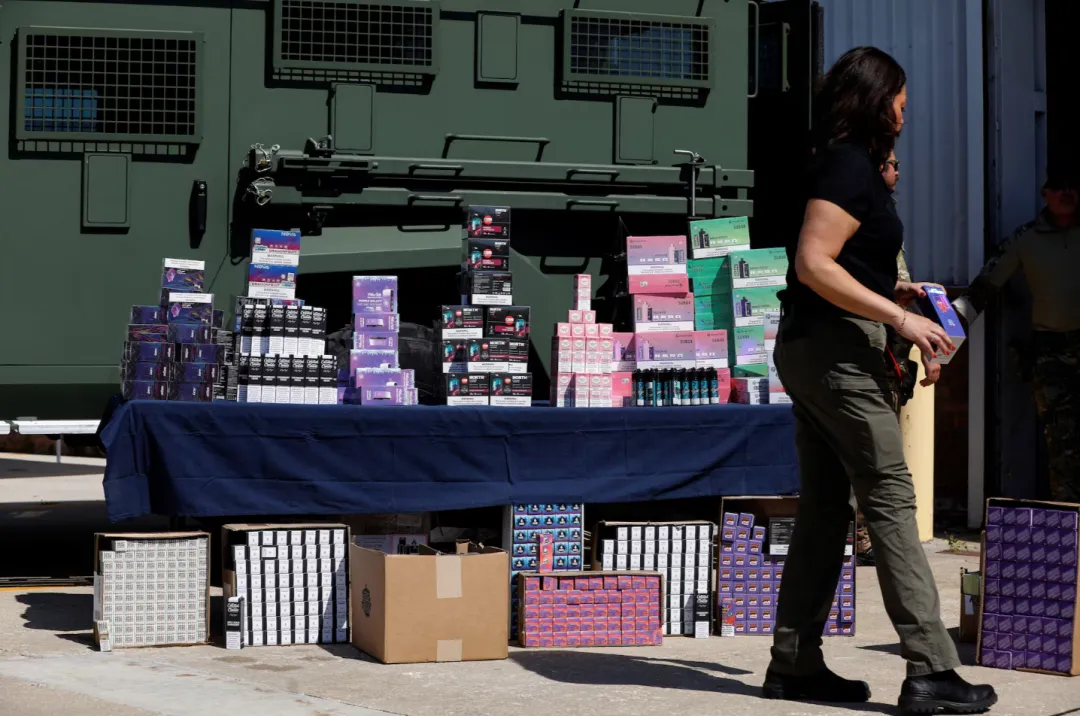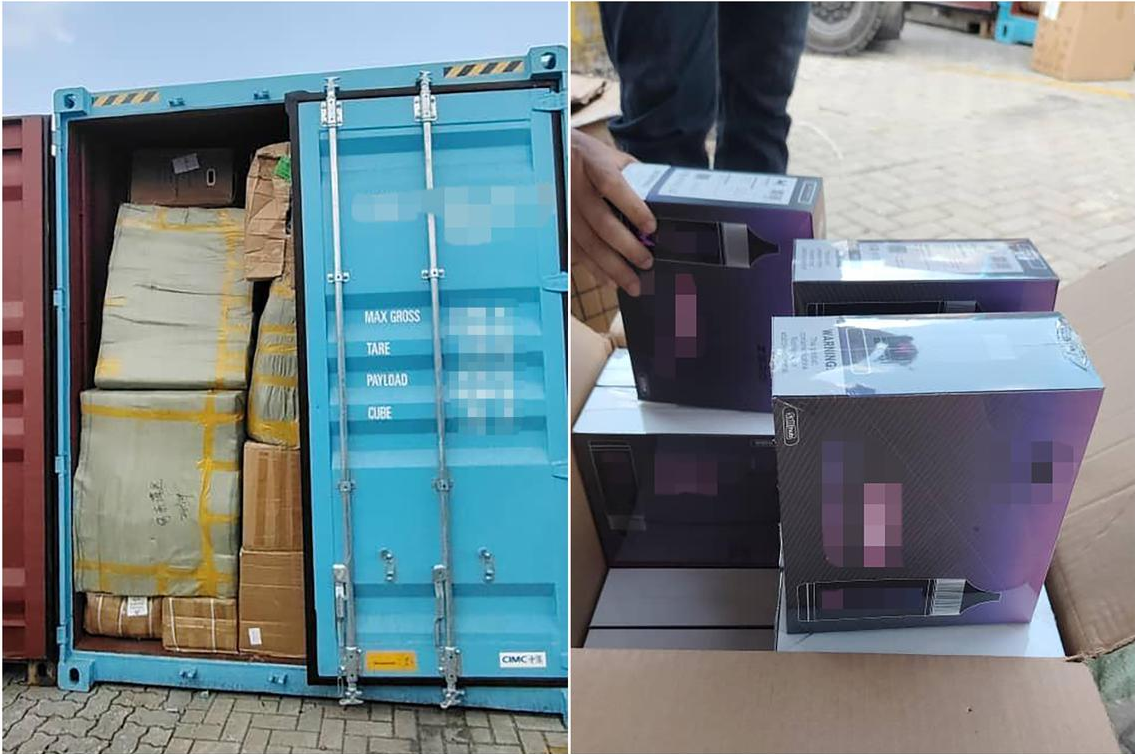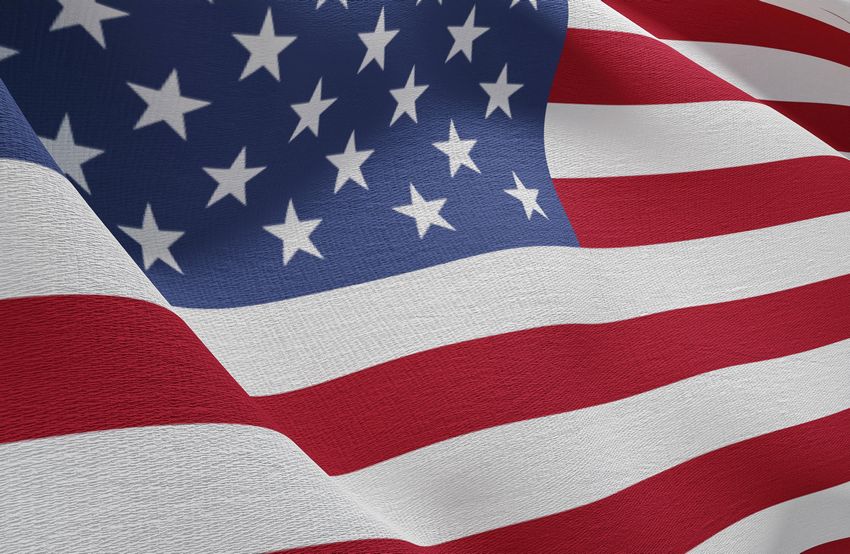Your cart is currently empty!
Author: amovape
-

Western Vape Brands Strike Back: No-Heat Tech, Smart Devices, and a Global Market Showdown
From Heat to No-Heat: Western Vape Brands Plot a Comeback
For the last decade, the e-cigarette wars in the U.S. and Europe have been about one thing: how to blast nicotine into your bloodstream faster than a Formula 1 pit crew. But 2025 is shaking up the game. The new frontier isn’t “stronger hit,” it’s a full redesign of the nicotine delivery system itself.
The Cool Kids: Chill Brands & SYP Go “No-Heat”
UK-listed Chill Brands Group and SYP Global have teamed up on a system that ditches the hot coils and sticky solvents. Instead, they’re using pure physics—think molecular-level aerosol magic—to get nicotine to your taste buds without the burn.
Why does it matter? No heat means no nasty by-products like carbonyl compounds or rogue metal bits. And because they’ve optimized the nicotine-salt recipe, you get the same throat-kick at a fraction of the power. Translation: your vape battery finally gets a day off.Market Musical Chairs in Scotland
Technology isn’t the only thing flipping tables. According to August 2025 data from Talysis, Scotland’s top ten vape brands now command 93% of all sales value—but the old kings are falling fast.
- Elfbar: sales down 57.5%.
- Lost Mary: off 44.7%.
- SKE: down 34.4%.
- Gold Bar: practically vanished with a 93.5% plunge.
Who’s cashing in? Upstarts like Pixl (market share jumped from 8% to 22% in a single quarter) and regulation-friendly options like Hyola and blu—all sporting squeaky-clean TPD2 compliance stickers that reassure grown-up smokers.
JUUL’s Legal Uppercut
Remember JUUL, once the North American vape overlord with a 70% share? They’ve slipped below 25% after youth-vaping crackdowns—but they still have lawyers.
In September 2025 the U.S. International Trade Commission opened an investigation into rival NJOY and parent company Altria, over JUUL’s prized U.S. patent 12,156,533 (that’s “keep the coil steady and stop the leaks,” in plain English).Analysts say this isn’t just about NJOY. With U.S. Customs now seizing 30% more uncertified imports year-over-year, JUUL may be setting the stage for a broader “patent squeeze” on low-cost Chinese brands.
VUSE Gets Brainy
Meanwhile, VUSE, the world’s biggest vape brand, is betting on brains over brawn. Its new Vuse Ultra comes with a 1.83-inch AMOLED screen and Bluetooth app.
- CloudControl™ syncs your puff habits to the cloud.
- Flavour Autotune tweaks vapor output so your favorite mint or mango always tastes “just right.”
Parent company British American Tobacco poured 35% of first-half 2025 revenue into R&D, even as market share slipped 8%. They’re clearly playing the long game: personalized vaping, deeper device-user interaction, and maybe even “health management” features. While some competitors chase cheaper pods, VUSE is already sketching the blueprint for “vape + wellness.”
The Bigger Fight: Who Sets the Rules?
Put it all together and you see the pattern: Western brands are done letting cheap, fast-moving Chinese supply chains write the playbook. They’re grabbing for rule-making power—with cleaner tech, stricter compliance, smart gadgets, and a side of patent warfare.
If Chinese companies can’t match them on R&D, regulation, and user insight, they risk dropping from “global conquerors” to “followers of someone else’s rulebook.”
For U.S. and European giants, this isn’t just a comeback; it’s a re-definition of what vaping is supposed to be—cleaner, cleverer, and unmistakably theirs.
Bottom line: The West wants to take vaping from “cheap clouds” to “high-tech health accessory,” and the first round of the rematch has only just begun.
-

FDA Raids Midwest Goods: America’s Biggest Vape Bust Yet
On September 10, the FDA and U.S. Customs and Border Protection announced they’d just pulled off the largest e-cigarette seizure in U.S. history. The prize haul? Over 4 million unauthorized vape products worth a cool $86 million. Not bad for a week’s work in Chicago.
According to local media, the stash was uncovered inside the warehouse of Midwest Goods, a well-known vape distributor in Bensenville, Illinois. Think “Costco for vapes,” only this time the feds didn’t come to shop.
Midwest Goods: “We Didn’t Do Anything Wrong… And by the Way, FDA’s Playing Favorites”
Midwest Goods quickly fired back with a statement denying any wrongdoing. Their defense:
- Most of the seized products were U.S.-made bottled e-liquids, not the disposable vapes regulators usually go after.
- These products were already submitted for PMTA approval (that’s the FDA’s “permission slip” to sell tobacco products). Trouble is, the FDA has been sitting on those applications for more than five years—despite a legal requirement to decide within 180 days.
- Meanwhile, the FDA seems to be giving Big Tobacco companies the VIP express lane, while smaller players like Midwest Goods are left in regulatory limbo.
The company also stressed that bottled e-liquids for refillable devices aren’t what kids are using. According to CDC’s 2023 survey, fewer than 6% of teen vapers mess with refillable, open-system devices. Translation: “We’re not the problem, guys.”
The Statement in a Nutshell
Midwest’s full response was basically:
- “Yes, the FDA and U.S. Marshals raided us. No, we’re not panicking—we’re cooperating.”
- “Most of our products were legally made by American companies, employing thousands of workers. The only thing illegal here is how long FDA takes to answer emails.”
- “We even pulled products off shelves after FDA’s August inspection, and told them we’d yank more if asked. They never asked.”
- “Funny timing though… the FDA just hinted it’s fast-tracking Big Tobacco’s products—some submitted later than ours. Oh, and Big Tobacco is still happily selling unauthorized disposables while we get raided. Go figure.”
The statement closed with the usual polite-yet-pointed line: “We’ll keep cooperating, but don’t rule out us calling our lawyers.”
The Bigger Picture
This raid is a big deal—not only because of the sheer size of the seizure, but because it shows how the FDA’s vape policy is still a messy battlefield. Small distributors say they’re being squeezed out, while Big Tobacco marches ahead.
And Midwest Goods? They’ve gone from vape warehouse to courtroom contender—whether they like it or not.
-

Smuggled Vapes in Furniture Boxes? Malaysia’s Sneaky Shipment That Almost Hit Singapore
The Skinny (with a Wink)
Malaysian Customs at Port Klang decided “furniture” must be code for something funnier—because when they ripped open some seemingly innocent boxes declared as chairs or tables on July 30, they discovered a stash of 300,000 vapes and vape parts—clearly not IKEA leftovers. These were allegedly bound for Singapore.
The stuff came from China, camouflaged by green plastic wrap—a tobacco trick straight out of a spy movie. Branded badly too: these “Salthub” units had zero health warnings, which any legal product in Selangor (where Port Klang sits) would absolutely need.
The Plot Thickens: Smugglers Get Creative
Turns out, these vape traffickers thought land routes were so last season. Instead, they moved their stash by ship—because why drive when you can sail under the radar? The UNODC tipped us off in May: Malaysia’s become a shipping hot spot for both meth (that’s “Ice”) and vapes sneaking into Southeast Asia.
Selangor isn’t just about on-shore convenience—it’s a major hub. In 2024 alone, authorities nabbed a whopping 3.6 tonnes of crystal meth. So it’s pretty much got a title like “Port of All Things Shady.”
A History of Cargo Shenanigans
This isn’t Port Klang’s first rodeo. In April 2023, “furniture” contained not tables, but Ecstasy worth $22.6 million, hidden inside some industrial machinery. Two months later, 300 kg of coke was caught hiding in beans. Talk about the world’s weirdest grocery order.
Early 2025 added more flavor: customs intercepted RM5 million worth of vapes and e-liquids across Penang and Selangor—71,886 units plus nearly 787 liters of flavor. All disguised as “plastic stuff.”
THE delivery? Shipped from a mystery Chinese company with no contact info, delivered to an address that—surprise!—wasn’t a warehouse but just someone’s house. Mailroom-level logistics, folks.
Singapore’s Response: From Chill to “Zero Tolerance”
Across the border, Singapore didn’t just raise an eyebrow—they ramped up their defense. From January 2024 to March 2025, authorities seized $41 million worth of vapes. That’s nearly five times more than everything confiscated between 2019 and 2023 combined.
April to June alone saw 19 major smuggling busts at airports, checkpoints, and seaports—adding another 90,000 vapes and accessories to the confiscated pile.
How Singapore Is Fighting Back
The Immigration & Checkpoints Authority (ICA) is going full-on spy mode:
- Data analytics to flag sketchy cargo and travelers pre-arrival
- X-rays, scanners, and handheld detectors at checkpoints… because apparently furniture isn’t tricky enough
- Public awareness blitzes at schools, army camps, dorms, and public transport
- And as of September 1, the government officially treats vaping like a drug problem, with tougher punishments: $500 fines for under-18s (up from $300), and $700 for adults (up from $500). Rehab, mandatory supervision, and jail await users of drug-laced vapes—also known as “Kpods.” Sellers face stiffer penalties under the Misuse of Drugs Act.
-

The U.S. FDA: From OxyContin Champ to Vape Gatekeeper
Ever get the sense the U.S. Food and Drug Administration (FDA) is playing the world’s most inconsistent game of Simon Says? First they waved through OxyContin like candy, and now they’re blocking devices that adults could use to ditch cigarettes. Spoiler alert: that’s not great.
Back in the ’90s, the FDA gave the green light to OxyContin without batting an eyelash about long-term safety or addiction risks. Purdue Pharma played hype-man, branding it as a miracle pain reliever—until it turned into a bona fide opioid catastrophe. By the time the company was hauled over the coals in 2007 for misbranding, addiction was already tearing through communities like wildfire.
Fast-forward to today: nicotine pouches, e-cigarettes, heated tobacco—tools that could help adults escape deadly smoking are stuck behind red tape. Seriously, regulation has become Olympic-level rigid. It’s like the FDA saw the opioid tragedy and said, “Y’know what? Let’s not learn anything—let’s just build a wall.”
Meanwhile, they’re laser-focused on youth vaping—even though usage is historically low—and haven’t let crises like the 2019 lung injury outbreak pass without an overreaction. That scare wasn’t caused by nicotine vapes at all, but by illicit THC products. Yet, the FDA still blurted out warnings like confetti.
Here’s the kicker: the very products that could help smokers quit are nearly impossible to bring to market unless you’re a giant tobacco company. Small innovators? Sidelined. Smokers? Blocked from safer options. Public health? Taking a nosedive.
To make matters worse, people dedicated to helping others via harm reduction are being criminalized. Take Tennessee’s Dr. Paige Lemen—arrested for transporting a 0.7-gram sample for scientific testing. Her “crime”? Trying to help. Now outreach centers are shutting down, and trust is evaporating faster than Wednesday’s lunch.
Let’s talk cold, hard facts: Italian studies found that after just 12 weeks, heated tobacco users quit smoking at a nearly 40% rate—and e-cigarette users weren’t far behind. Meta-analyses and broader reviews back it up: nicotine-containing e-cigs, snus, and similar products significantly aid cessation—and with fewer side effects than traditional smoking.
Need more incentive? NIH data shows smokers with other substance use disorders who quit smoking had a 42% higher chance of staying clean from other addictions. That’s not just interesting—that’s life-saving. Smoking isn’t just a separate habit, it’s the stubborn glue that sticks other addictions together.
So what’s the smarter play? Streamline approvals for genuinely safer nicotine alternatives—big companies or indie innovators—it doesn’t matter. Give adults access, protect youth, and also shield the people providing harm reduction from legal landmines. Integrate smoking cessation fully into addiction recovery, and regulators should stop acting like the bouncer at a club nobody’s invited to.
-

Singapore Turns Up the Heat on Vapers – With Fines, Jail, and Even the Cane
According to a BBC report on August 28, Singapore has decided to crank up the punishment for vaping, especially the drug-laced kind that’s been making the rounds. The government isn’t joking around—penalties now include heavier fines, longer jail terms, and yes, even good old-fashioned caning. Foreigners, beware: you could get deported too.
1. How tough are the new rules?
Singapore has gone for a “double strike” approach: tough on both regular vapes and the drug-laced ones.
- Ordinary vapers: Just puffing on a “harmless” e-cig can land you with a fine of up to 500 Singapore dollars (£288 / $390) and compulsory rehab. (So much for “it’s just vapor, bro.”)
- Drugged-up vapes (with Etomidate): If you’re caught supplying these, you’re looking at up to 20 years in prison and 15 strokes of the cane. That’s not a typo.
- Foreigners: Expats and tourists don’t get a free pass. You could lose your work or residence permit, be kicked out, and even banned from coming back. Changi Airport will now greet visitors with clear signs, warning them about the vape ban, plus handy “disposal boxes” where you can ditch your e-cigarette before the cane finds you.
The law kicks in on September 1 and will run for six months while the government drafts more permanent anti-vape measures.
2. Why the sudden crackdown? Meet the “Kpods”
Singapore banned e-cigarettes way back in 2018 (pioneer move!), but the habit never really died. In fact, things got worse recently thanks to a trendy new product: “Kpods.”
“Kpods” (short for ketamine pods) are vapes spiked with Etomidate, a drug with ketamine-like effects. Officials admit these have exploded in popularity. In July, one-third of 100 confiscated e-cigarettes tested positive for the drug.
Meanwhile, videos of teens casually vaping in public have gone viral, sparking a wave of local outrage. Singaporeans are famously tough on drugs, so public opinion is firmly behind the crackdown. Health Minister Ong Ye Kung summed it up bluntly: “E-cigarettes have become a gateway to serious drug abuse. These devices are basically drug delivery systems.”
3. Not just punishment – Singapore rolls out prevention too
Singapore isn’t just wielding the stick (literally). It’s also rolling out education and enforcement in a three-pronged attack:
- Public health ads: Government posters now plaster buses, trains, and public spaces, all screaming the same message—drop the vape.
- Community & schools: Vape disposal boxes are popping up in clubs and universities, while schools run anti-vaping health programs.
- More patrols: Officers are now checking trains, bus stations, and parks. Bags can be searched on the spot. On top of that, border controls at land checkpoints, airports, and seaports have been tightened—since most e-cigs sneak in from Malaysia and Indonesia.
4. A global anti-vape wave
Singapore isn’t alone in cracking down. Other countries are joining the war on flavored clouds:
- Belgium banned disposable vapes back in January.
- The UK followed in June with its own ban on disposables.
- Australia has been phasing out e-cigs since 2023, banning both over-the-counter and single-use types.
Looks like the world is slowly closing in on vapers everywhere.
In short: light up a vape in Singapore, and you might just trade your puff for a prison cell, a hefty fine, or a very sore backside.
